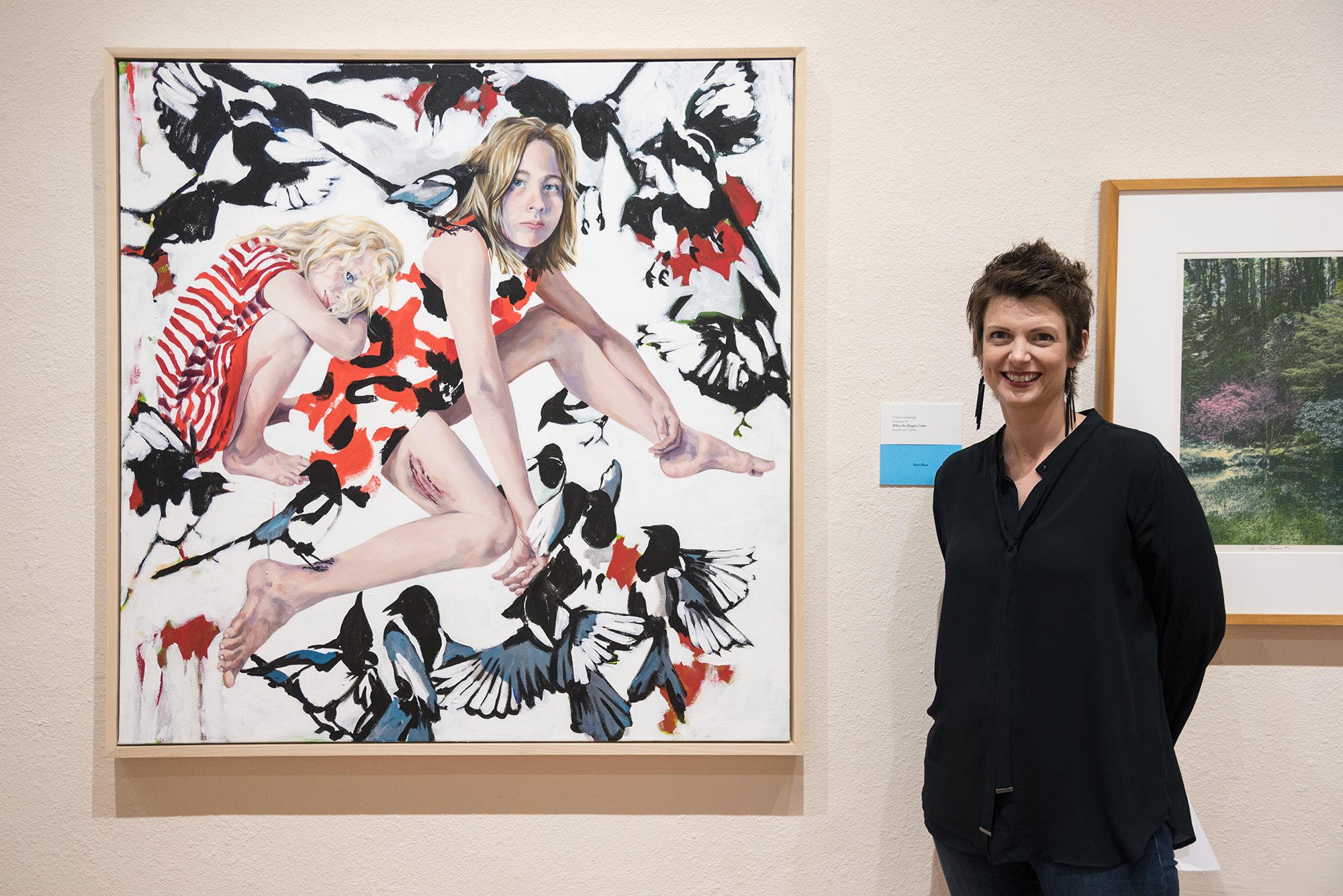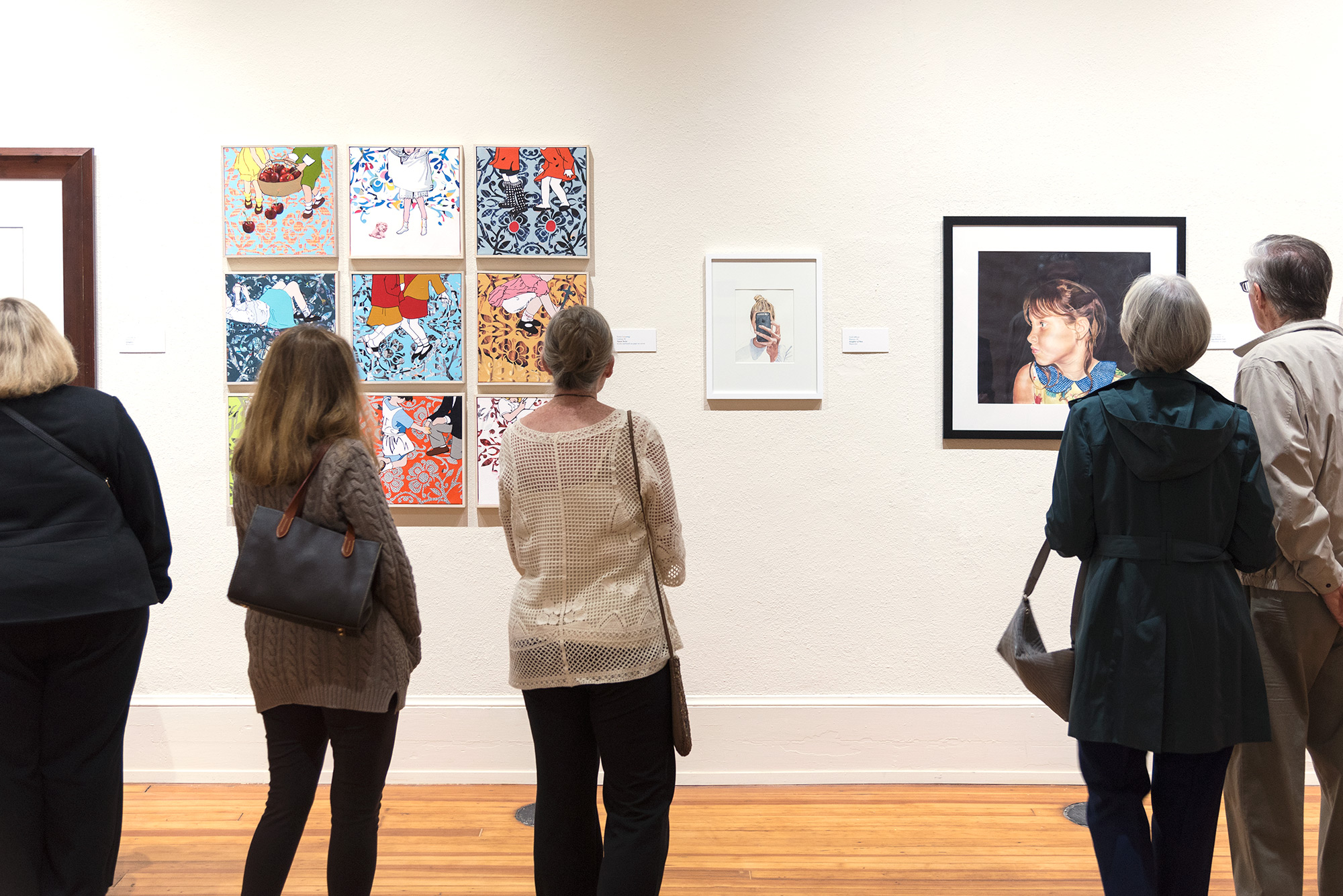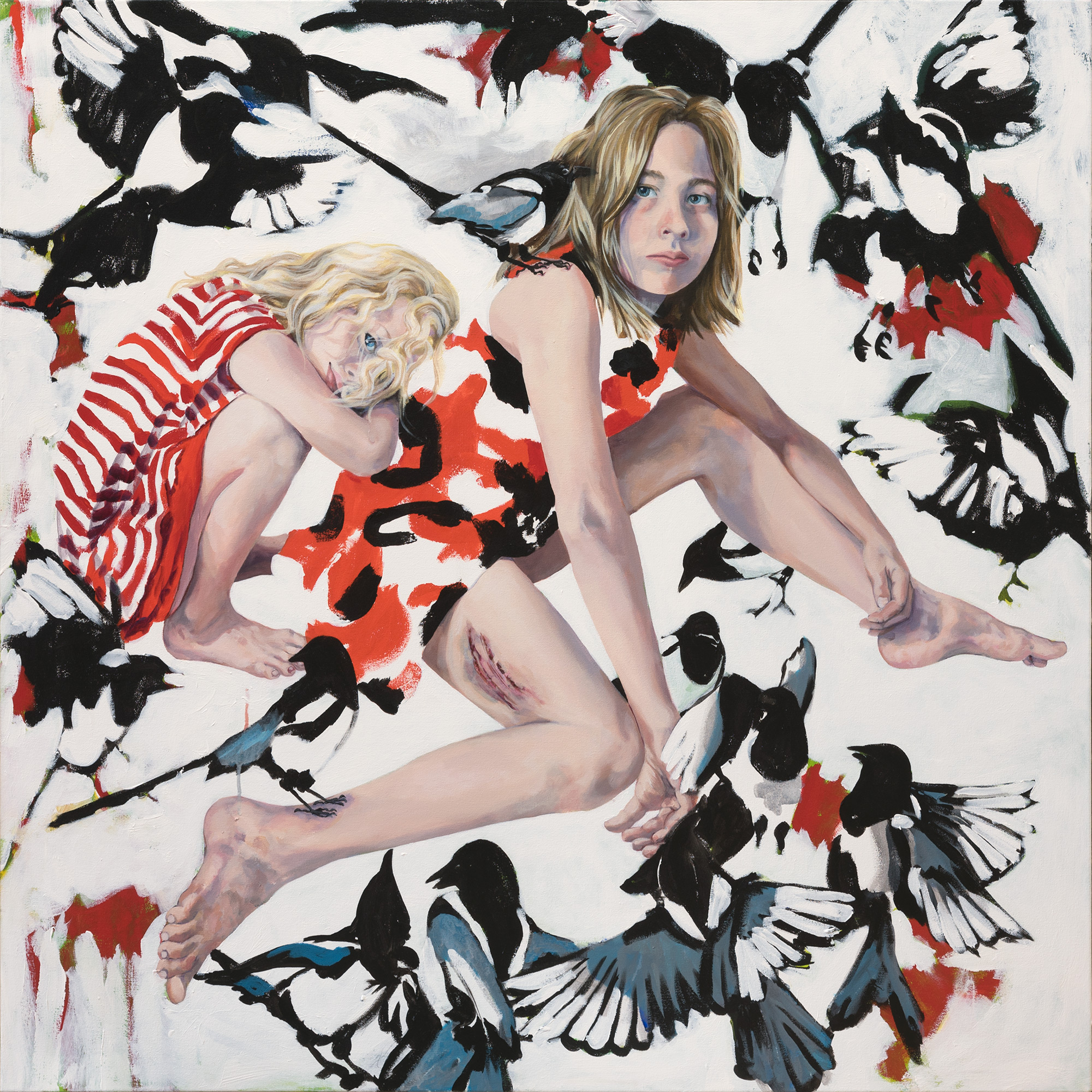Yvette Cummings
Conway, SC
When the Magpie Came
Acrylic on Canvas
Q: When the Magpie Came concerns ongoing themes in your work. Magpie in particular has received recent critical attention. What do you think is different about this painting compared to other, previous works?
A: That is a tough question for an artist. The piece is very dynamic and resinates with viewers on a multitude of levels. I have had people talk to me about their relationships as an eldest sibling and the way the piece captures that responsibility in Harper’s face and posture. Formally the piece has great balance between the bird pattern, painted in a loose manner, vs. the figures rendered in a more traditional sense; the unease and discomfort that comes across is relatable whether you are a mother, father, sibling, survivor, etc. all the parts are working together in this piece in ways that might not have occurred in previous works.
Q: In Magpie the figures are hunched in and tightly contained by the canvas, which brings them to life-sized proportions. In Voyeur Series, the individual pieces are small (~14” sq). How important is scale to the expression of specific ideas in your art?
A: Scale definitely plays an important role in the Voyeur Series; part of the idea behind a voyeur is to be looking at or engaging in something as an outsider or from afar – with the images at a page like scale the viewer must come relatively close to them to read the images for what they are, not so innocent revelations of childhood relationships. The images are appropriated from classic illustrations so the scale is larger than the original but still relevant to the content. The impact would not be the same if these were reproduced at life-size scale, it is more about the mass quantity and forcing you to look closer. The piece is constantly growing with an additional 6 images created and 16 sketched and waiting to be painted in the studio. The intimate scale of the individual pieces will become overwhelming as the work goes from a grid of 9 pieces to 50.

Yvette L. Cummings, pictured with her 2017 Pee Dee Regional Art Competition 1st place painting, When the Magpie Came.
…the unease and discomfort that comes across is relatable whether you are a mother, father, sibling, survivor, etc.”
Q: Your compositions tend to use a carefully measured juxtaposition of foreground / background elements. Simple foregrounds with female figurative representations, specific in nature, against busy graphically patterned backgrounds. Magpie has kept to the format, but has substituted decorative ornamental pattern for the rogue and bloody flock of birds. Is this a new development? Do you think you are moving away from graphic, stylized treatments in your larger paintings, or was it simply the best solution for this particular piece?
A: The decorative background space/element will continue to play an important role in the work as it progresses. The patterns are used to flatten the visual space reminiscent of Matisse’s Red Room, where the wall pattern and the tablecloth have the same pattern at the same scale. For me the patterns flatten space in much the same way as distance and time are flattened when we are recalling memories. For the Magpie piece, I experimented with a variety of traditional damask patterns but none really fit with the girls’ pose; the Magpie motif allowed me to reference my youngest daughter (nicknamed “Magpie”) and take a form that is very dynamic and create a pattern from it. The pattern is the important element, not necessarily that it is floral. I imagine future work will push the boundary of the pattern motif in the same way with different forms.
Q: About the relationship between subject, object and viewer… there is a deliberate absence / removal of eye-contact with the figures of Voyeur Series – on the other hand the young girls in Magpie are looking directly at the viewer. Can you comment on that?
A: The elimination of eye-contact in the Voyeur Series is a way to make the figures more universal and allow the viewers to project themselves and their experiences onto the figures. By removing the gaze and the expressive nature of the eyes, each figure is more ambiguous, can be any soul, weak or strong, broken or whole represented in each piece. The large scale paintings are often more confrontational and situational – I am using my children as models for more specific moments I want the viewer to confront and engage in. The life-sized figures present a story vs. the Voyeurs allowing you to become a part of it.

Artwork pictured left to right: Voyeur Series by Yvette L. Cummings, Daughter of Man by Uschi Jeffcoat, and Apprehensive Love (3rd place) by Ashley Arakas.







